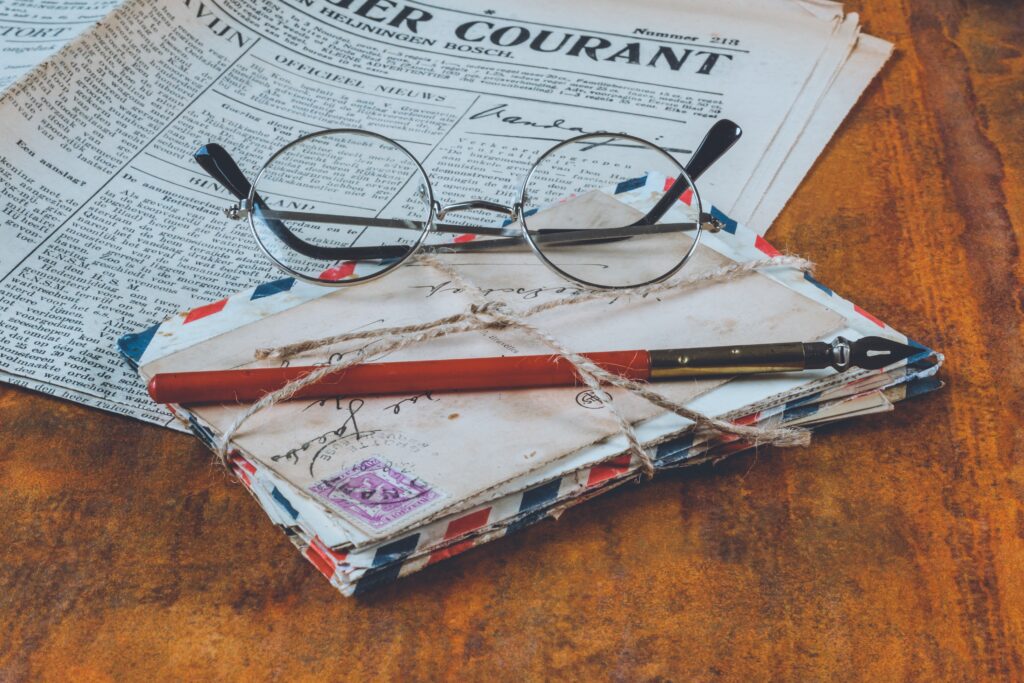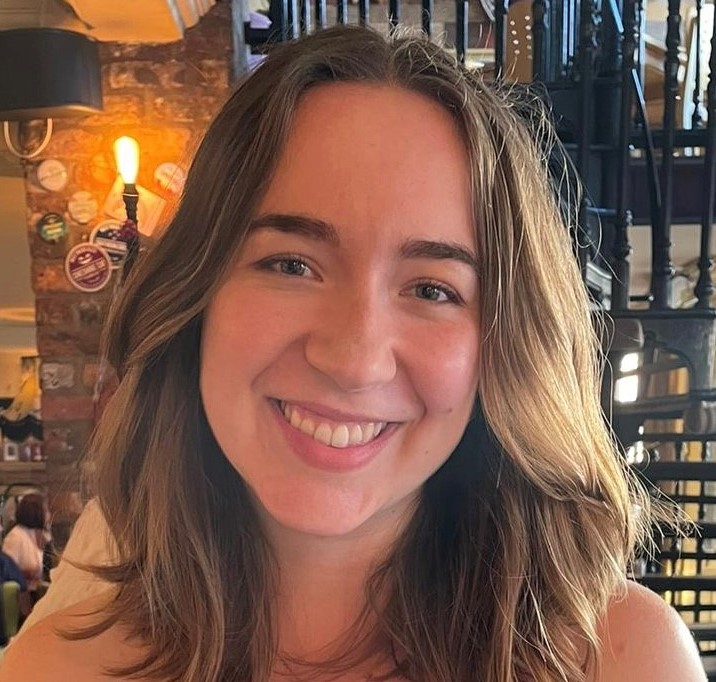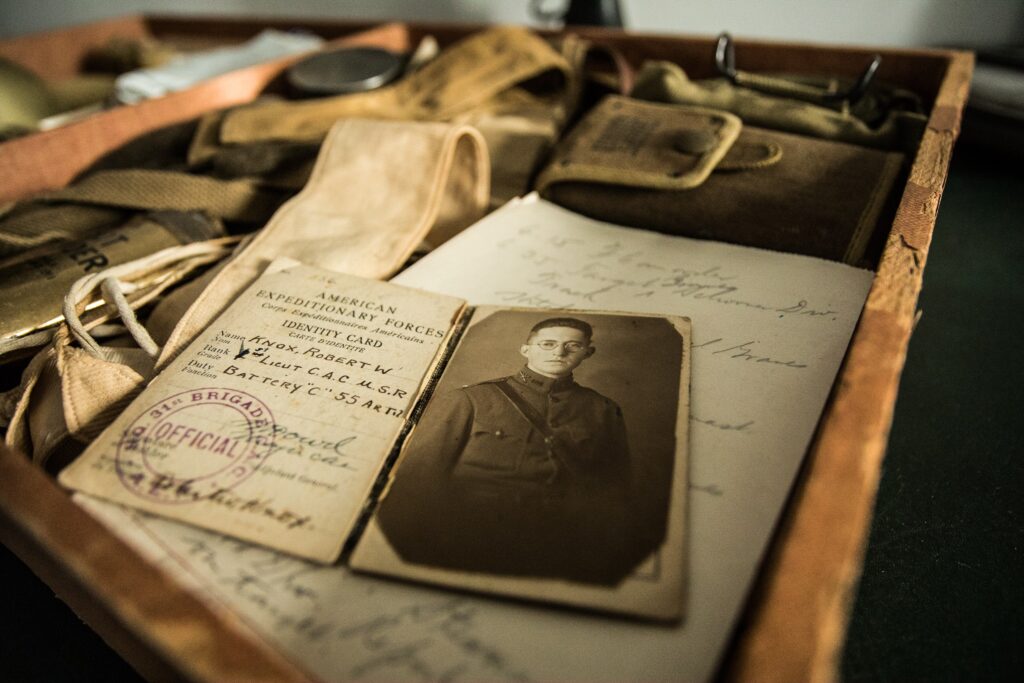We live our lives among and through objects, and some of them become important to us. These cherished objects are part of our life stories.
According to the old adage, a picture is worth a thousand words. I don’t know if that’s always true, but images are certainly a treasured, powerful and important part of our authors’ books. Much of the time, and rightly so, our authors like their life stories to be highly illustrated, preserving within the pages of their books photographs of important moments in their lives that reflect and complement the stories they accompany.
At LifeBook Memoirs, we love to push at conventional boundaries to represent life stories as fully as we can, so if you happen to leaf through our authors’ books, you won’t find only photos of marriages, babies, parties or holidays, but also other equally interesting images. Books might contain scans of paper items such as birth certificates, programmes from significant events, newspaper articles or letters. These items, often bearing marks of wear and tear that are themselves part of the story, impart a rich texture and context to the narrative.
A book written by an author who enjoyed a career in music, for example, features a photograph of a poster listing the position of her single record in the Top 20 music chart one week in 1963. An author’s childhood letter written to his parents while on a camping trip reveals touchingly wobbly copperplate handwriting and what looks suspiciously like a scorch mark on the lined paper! Maybe he was playing with matches, but we don’t know, for he does not tell us.
One of our bespoke books features scans of the author’s handwritten family recipes, with typed versions displayed on facing pages, a beautiful touch that not only enhances her life story but preserves her recipes as a legacy for future generations. A tribute book, gifted as a surprise, features handwritten letters from the recipient’s children and grandchildren at the beginning of each of their respective tributes.

Another book includes letters sent to a mother from a son who was fighting in the Vietnam war. The state of the letters tells its own story: crumpled pages, ink blotches, the paper used (the letters were written on the backs of comic strips), doodles in the margins … One letter had been written with the soldier’s left hand, as he’d been shot in his right shoulder, and the handwriting is as spidery as you’d expect! We have even featured translated works, presented both in the original language and in English, affording rich cultural and historical context to the narrative.
Photographs of awards that authors have received often feature in their books, as well as family heirlooms. This comes in handy when people have to decide what to keep and what to purge from their homes. Keeping everything may not be possible, but even if a precious object must be disposed of, its significance can be preserved in a story and an image. We recommend that you take a photograph and capture the story, and then let that story continue in another household!
People’s stories are intertwined with objects. Memories and emotions are attached to material things, and they tell us about the person they belonged to. Our US recruiter, Gail, has a story about her own precious object.
Once, during a visit to my aunt Mary’s house in New York, she showed me a United States Navy blanket that had belonged to my father (her brother) during his enlistment in the navy. Dad turned 18 in 1946 and graduated from high school a semester early so he could enlist as soon as he was eligible. This, in and of itself, is an interesting observation of the strong patriotic sentiments running through Dad and all young men throughout the US who were anxious to do their part, even after the war ended.
Aunt Mary offered the blanket to me, and I gladly accepted. Both of us knew Dad was not overly sentimental about material possessions, and he likely would have purged the blanket if he had it. Over the years, I’ve imagined Dad being issued the blanket and using it during his time in the navy. I’ve wondered at this timeframe in history and have mapped out my own story of the blanket. I’ve appreciated that, at some time, this blanket would have been meaningful enough to Dad that he brought it home. The blanket connects me to Dad as a young man and to history. It is very much a prized possession of mine.
However, my recollections are not quite accurate. I recently reread a short history of my parents that I’d previously written which says:
“Aunt Mary remembers Dad came home every weekend when he was assigned to Bethesda Naval Hospital. He often came with the dentist he worked for. The dentist’s wife brought the family 1-2 wool blankets that had US Navy written on them.”
This does not at all diminish my connection to the blanket, but the story is slightly different than what I recalled. The little details count, and I am so thankful I got the story from the original sources and had this to refer to, although I now have more questions that I wished I asked!
The materials that make up the tapestries of our lives are more than just photographs, and this is something that we strive to reflect in our books. Our authors have varied and colourful lives, so their books should be too! Their treasured possessions become immortalised in their books for future generations of the family, and the books themselves become the precious heirloom: memory made material.

Written by Heather van Graan, LifeBook Memoirs bespoke project manager

